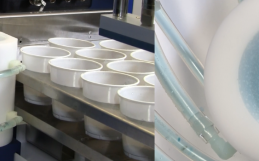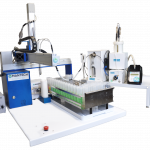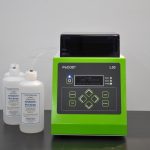PeCOD Directly Correlates to APHA Standard Method 5220 (ISO 6060)
A chemical supply company in the pulp and paper industry in the UK has demonstrated the successful correlation between the PeCOD COD (Chemical Oxygen Demand) Analyzer and Standard Method 5220. The standard method uses dichromate, mercury, and sulfuric acid. These reagents are toxic to humans and highly hazardous to the environment. In comparison, the PeCOD uses only safe, and green reagents, therefore is safe for the environment and public health. It also provides fast COD analysis and a strong BOD correlation in 10 minutes or less.
The following results were obtained:
| Sample | PeCOD result mg/L |
| TM3 Brown-Water | 4439 |
| Primary Filtrate | 2712 |
| 2nd feed effluent | 4029 |
| Secondary Outlet Comp | 106 |
This particular set of data was determined in the Red PeCOD range which is best used for samples with a COD concentration of up to 15,000 ppm, undiluted. It is evident that even at the lower end of this range, the PeCOD can still measure accurate results.
The COD data obtained by the PeCOD met the expectations of the company in comparison to the standard dichromate method that they had previously used. After this trial offered by MANTECH, the company has decided to invest in a PeCOD L50 unit. Using the PeCOD, they will be able to support pulp and paper customers directly at their sites due to the safe method that is portable. The company can make actionable decisions in minutes, effectively supporting their customers. The PeCOD can also be automated for multiple batch analysis and online measurements.
The PeCOD Analyzer also offers a strong correlation to Biochemical Oxygen Demand (BOD), and Total Organic Carbon (TOC). In just minutes, the PeCOD will analyze samples, providing accurate, real-time results while other methods take hours to days.
More information about the PeCOD COD Analyzer can be found here. Click here for the PDF version of this article and here to read another case study on the application of the PeCOD Analyzer in the pulp and paper industry.
Author:
Laura Martin, Quality Control and Research Chemist







